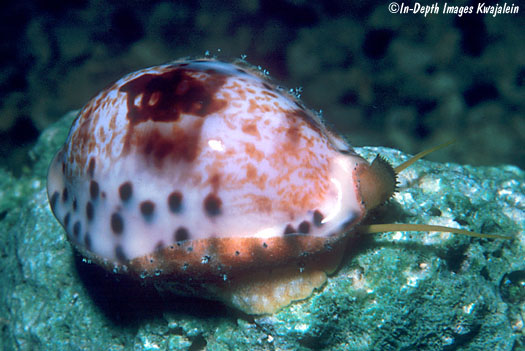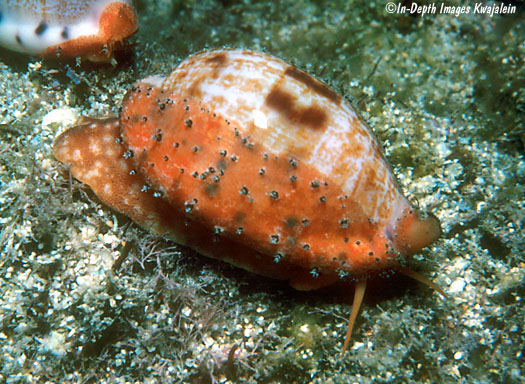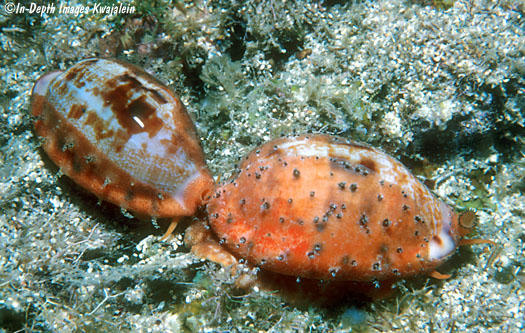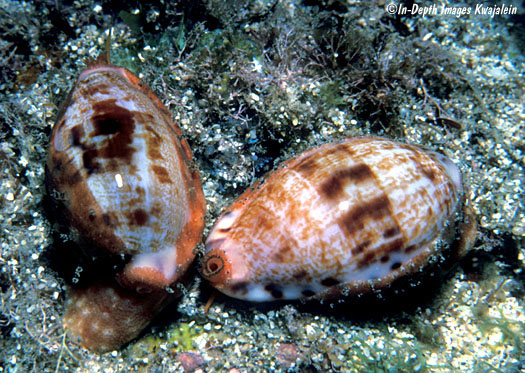
Talostolida latior is apparently endemic to the Hawaiian Islands. We found it to be very rare around the main islands, and saw fewer than half a dozen living specimens over a span of about 13 years. However, several empty shells on the beach and a living specimen were found on two short (2-4 week) research trips I made to Kure Atoll in 1979 and 1980, so it is probably more common in the Northwestern Hawaiian Islands. It resembles both Talostolida rashleighana and T. pellucens. The shell is easily distinguished from both species by animal characteristics, particularly the mantle papillae, which in T. latior are numerous, small, and black at the base with branching white tips. T. latior shells tend to be more deltoid rather than the more elongate T. pellucens, and the black marginal spotting runs onto the shell's base and up both sides of the shell into the dorsal pattern; in T. pellucens, the spots are mostly confined the margin on both sides, rarely extending slightly onto the base or up the sides. Because of this, occasional specimens of T. pellucens that are more spotted than others are often figured as T. latior (or its synonym T. burgessi). T. latior tends to be larger and more elongate than the similar T. rashleighana, and differs in mantle characteristics. The first specimen below was found at Makaha, Oahu, under a rock at a depth of about 20m on 13 September 1979.



